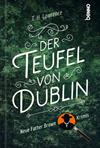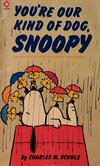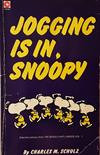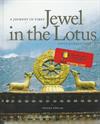
Mabinogion, The (Penguin Classics)
 Cordelia-anne
Cordelia-anne of Decatur, Georgia USA on 2/26/2005
of Decatur, Georgia USA on 2/26/2005 This Book is Currently in the Wild!
This Book is Currently in the Wild!
3 journalers for this copy...
"On the bank of the river he saw a tall tree: from roots to crown one half was aflame and the other green with leaves."
Nothing illustrates the strange nature of these Welsh stories better than this vertically halved tree. The combination of fact and fantasy, of myth, history and folklore in The Mabinogion conjures up a magical enchanted world, which is none the less firmly rooted in the forests, hills and valleys of ancient Wales. the eleven stories were composed orally over a span of centuries, before being written down in the thirteenth century. They make up, in their vituosity and panache, one of the great Welsh epics.
The "Mabinogion" burst upon the literary stage in the mid-19th century; it has been seen by many as perhaps Wales's greatest contribution to European literature. In any event, its compelling use of dialog and emotional intensity shine through even in translation, and its well-told, appealing stories, clearly-defined characters and eternal motifs have been the basis for much subsequent European and world literature, not to mention Welsh poetry through the ages.
The title "The Mabinogion" was first used by Lady Charlotte Guest in her translation of twelve medieval Welsh tales published between 1838 and 1849. The actual form "Mabinogion" appears at the end of the tale of "Pwyll", but it is generally acknowledged to have come from the word Mabinogi, originally meaning boyhood, but extended through a tale of a hero's boyhood to a tale in general. Before Lady Guest's translations, only the first four of the twelve tales had been known as "Pedair Cainc y Mabinogi", but since then the word Mabinogion has been used as a convenient term for all the tales with the exception of "Hanes Taliesin". The anonymous texts are preserved in the "White Book of Rhyderch" (written in mid-14th century) and the "Red Book of Hergest" (written slightly later).
There are four branches of the "Mabinogi", four distinct tales somehow linked to one another. Each tale (cainc) ends with "Thus ends this branch of the "Mabinogi". Evidence from the evenness of style and tone suggests that the tales may have been composed by a cleric sometime in the 11th century using material from a much earlier period involving figures from Celtic mythology. Only one character, Pryderi, appears in all four branches; he is born in the first and killed in the last. Recurrent themes can be detected in all four tales which reflect an attitude towards life that praises fair, reasonable conduct in which moderation is upheld as an ideal.
The hero of the first branch is Pwyll, lord of Dyfed, whose story is told in three distinct episodes. In the first he changes places with the king of Annwfn (the Otherworld) for one year, winning the title "Head of Annwfn." In the second, he marries Rhiannon. In the third, he has a son Pryderi whose mysterious disappearance forces Rhiannon to undergo penance for having killed him. Eventually Pryderi is restored to his parents and the penance on his wife lifted.
In the second branch, a much more realistic and savage story of jealousy and vengeance, the main characters are the giant Bran, king of Britain; his sister Branwen; their half-brother the evil Efnisien and the children of Llyr. Efnisien is angry at not being consulted when his Branwen marries Matholwch, king of Ireland at Harlech. He maims the king's horses, an act that demands punishment of Branwen. Efnisien then hurls his half-sister's infant son into the fire, a deed that causes turmoil and great slaughter in Ireland. Seven survivors bring Bran's head back to Wales where Branwen dies of a broken heart. The magical song of the birds of Rhiannon manage to bring solace until the spell is ended when Bran's head is taken to London to be buried.
The third branch deals with the friendship of Pryderi with Bran's brother Manawydan, a survivor of the horrible events portrayed in the second tale, and who marries Pryderi's widowed mother Rhiannon. This tale also centres around the jealousy and revenge of a magician who places an enchantment over Dyfed, laying it to waste but whose schemes are finally thwarted by Manadwy's resourcefulness and patience
In the last branch, the most complex of the four, the story centers on the family of Don. The plot, involving Math, king of Gwynedd and his foot-bearer, includes warfare between different Welsh kingdoms, trickery and deceit in the provision of a new foot bearer after the death of Pryderi, the magic of Gwydion, the creation of Blodeuwedd (face of flowers), and that recurring theme of so much early Christian literature: the results of uncontrolled sexual desire.
All four branches are tales of mystery and excitement. They have provided motifs and characters for generations of writers in both Welsh and English. The editor of "The Burning Tree", for example, Gwyn Williams, chose his title to suggest an outstanding mood of Welsh poetry: the simultaneous awareness of contrary seasons and passions, that mood in which the poet brings together the forces of love and war, summer and winter, holy sacrament and adulterous love. He cites Matthew Arnold's use of a passage from the "Mabinogion" as an example of "Celtic magic": And they saw a tall tree by the side of the river, one half of which was in flames from the root to the top, and the other half was green and in full leaf." Such magic is the very stuff of the "Mabinogion", unknown outside Wales until the translations of 1838-49. It is part and parcel of that long, consistent and glorious tradition of Welsh poetry that deserves to be so much better known.
The use of Welsh by the writer (or writers) of the Mabinogion was important. In Wales there had been a reaction against Anglo-Norman rule, and a new generation of writers began to praise native Welsh rulers in their own language.
More Celtic legends for San Diego.
Released 11 yrs ago (11/25/2012 UTC) at Walgreens - Lemay Ferry And Butler Hill in St. Louis, Missouri USA
WILD RELEASE NOTES:










